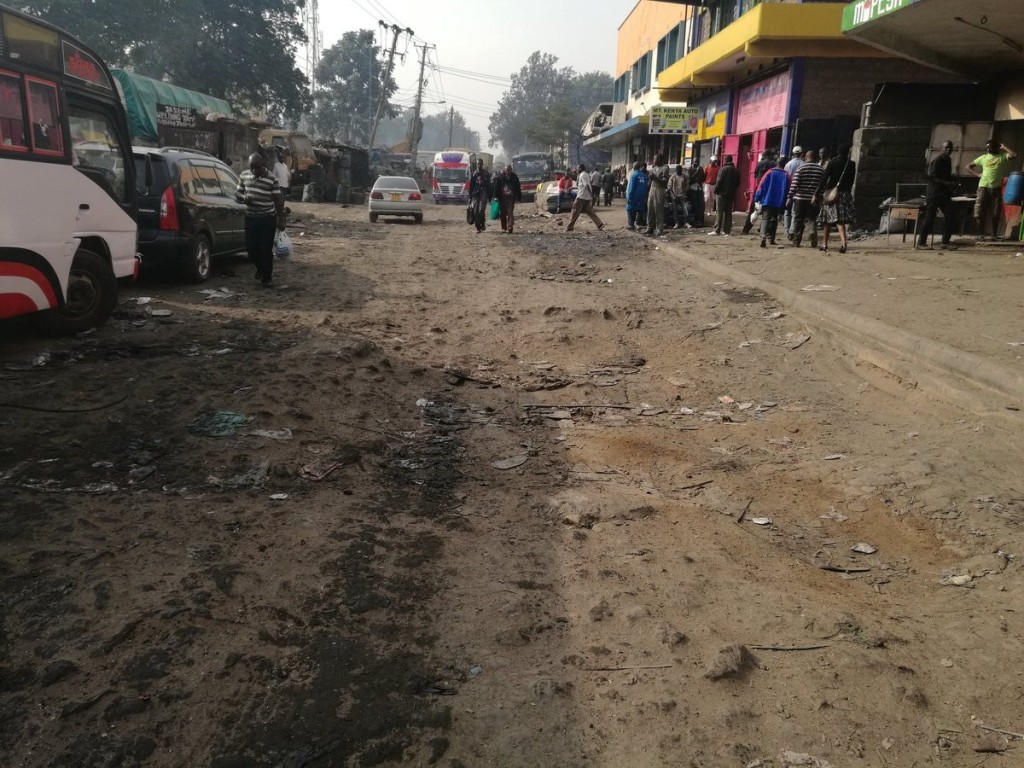Potholes and development goals: A dispatch from Kenya’s Silicon Savannah
This blog was originally posted by the Global Partnership for Sustainable Development Data’s on their website on 22nd August 2016.
I first came to Kenya in 2000 as a student teacher. Hardly anyone had a mobile phone and outside Nairobi, there were just one TV and one radio station. We bought computers for the school where I worked, but we had no way of getting online: The nearest Internet café was an hour’s drive away.
Sixteen years later, two-thirds of Kenyans have a smartphone and 20 million people use their phones to send and receive money. Nairobi has become a tech-startup hub and social media buzzes with the latest news on business, politics and the Olympic medal table. If there’s any place that is living the data revolution, it’s Kenya. So it’s appropriate that the Kenyan government is a founding member of the Global Partnership for Sustainable Development Data.
This past week, I was fortunate to join them and other members of the Partnership in Nairobi to learn what is happening in Africa’s “Silicon Savannah.”
The national workshop, convened by the Partnership, the Government of Kenya and the Aga Khan University Graduate School of Media and Communications, was intended to develop ‘Data Roadmaps for Sustainable Development’, a reference to the Sustainable Development Goals (SDGs) agreed last year at the United Nations.
Kenya’s own national development plan, Vision 2030, covers much of the same ground as the SDGs, so there’s little difference between global and national data priorities. Kenya has been gathering and managing data in electronic form for a long time: It begun digitizing public health records in the 1980s and in 2011, became one of the first African countries to launch an open data initiative. That initiative’s web portal features nearly 1,000 data sets, including the 2009 census, national budgets and county development plans.
Another exciting development is the growing field of citizen-generated data. This ranges from the citizen scorecards of organisations like Kwantu and Civicus to the pictures of potholes shared by Kenyans on Twitter using the whimsical hashtag #WhatIsARoad.

Nevertheless, the workshops revealed a number of data gaps that may be challenging to bridge because their causes are not just technical but also political. Three in particular stood out to me.
One gap relates to inequality. Several presentations revealed the dramatic divergence in income and life changes of Kenyans, and showed that the poorest are also the least likely to be counted. For example, the MapKibera project found there were approximately 300 schools in Kibera, twice as many as the government had recognized. Dadaab, a refugee camp near the Somali border, has close to half a million residents —Kenya’s third-largest city by some measures — but rarely appears on maps or in official statistics. There were more than 100 students to every teacher in the northeastern county of Mandera, according to one analysis; the national average is 31. Due to a series of terror attacks that have targeted teachers, it seems unlikely that this statistic will improve significantly soon.
A second gap is in sub-national data. Kenya’s constitution, revised in 2010, devolved most public service delivery to 47 counties. This provides for greater local autonomy but we also heard that some counties were reluctant to share data, while Kenya’s Ethics and Anti-Corruption Commission reports that devolution has created new opportunities for corruption. As a result centralized systems like those in Uganda and Rwanda may find it easier to monitor progress at the county or district level even though they are less open than Kenya overall.
A third gap is in tracking the activities of international donors, development banks and NGOs, which are numerous in Kenya and remain influential even as their contribution to total resources is falling.
“We must ensure there is no duplication — otherwise, at the end of the day, you will find one project being claimed by the county governments, national governments and the development partners,” Mwangi Kiunjuri, Kenya’s Cabinet Secretary for Devolution and Planning, told us at the workshop. “Let us synergize our efforts to alleviate corruption and poverty in all its forms and not groom it.”
That struck a chord with me. Publish What You Fund’s latest research shows that only 25% of aid and development finance meets the transparency standards that donors promised in 2011. Even when donors publish what they fund, it’s not always in a format that is visible to Kenyans. Our plea is for donors and NGOs to worry less about painting their logo on every Land Cruiser and more about publishing timely, comprehensive and forward-looking information on their activities, using standards like those spearheaded by the International Aid Transparency Initiative and Open Contracting. At the very least, Kenyans deserve the same level of information from outside agencies as they now expect from their own government.
The guiding principle of the Sustainable Development Goals is one of universality, summed up in the slogan “Leave No One Behind.” Evidence presented at the Data Roadmap for Sustainable Development workshop here in Nairobi over the past few days suggests that Kenyans are rushing to apply this principle, at least in data. I’m excited to see how their data revolution will unfold in the next decade and a half.

